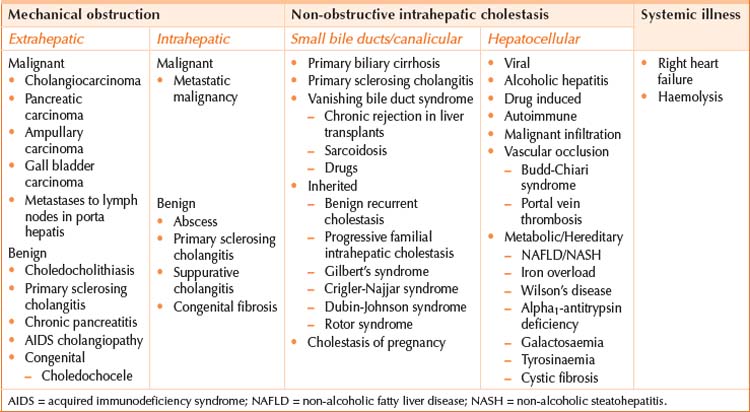Chapter 32 CHOLESTASIS AND JAUNDICE
CAUSES OF CHOLESTASIS
Cholestasis can broadly be divided into that caused by mechanical obstruction, and that caused by non-obstructive or hepatocellular causes. Table 32.1 lists the causes of cholestasis. Mechanical obstruction may develop in either the extrahepatic biliary tree or the smaller intrahepatic bile ducts. Non-obstructive intrahepatic cholestasis may arise from parenchymal disease affecting the small bile ducts and canaliculi or conditions affecting the hepatocytes directly (causing an excess of bile products to be formed). Considering the possible underlying causes of cholestasis will guide the history, examination and investigation of a patient with cholestasis. Important causes to consider include the following.
ASSESSMENT
History
Specific questioning will help determine the underlying aetiology of the cholestasis.
Stay updated, free articles. Join our Telegram channel

Full access? Get Clinical Tree









